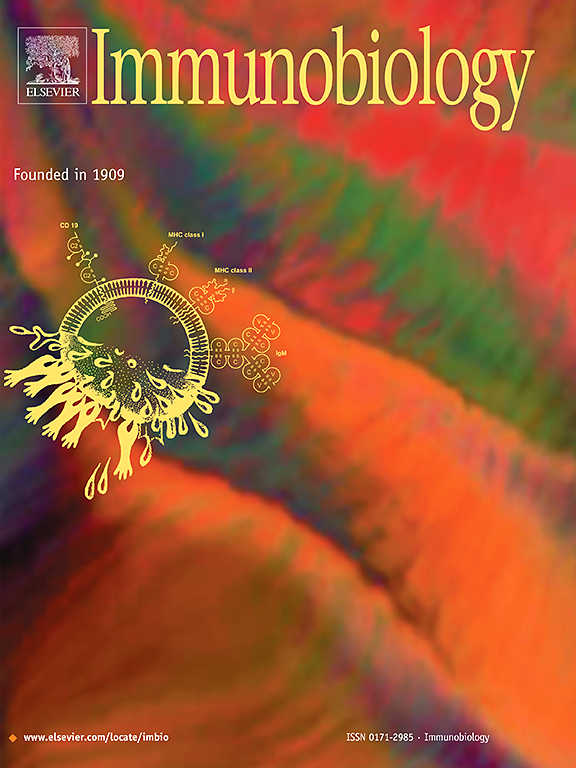Harnessing miR-16-5p-Loaded Exosomes from Adipose-Derived Stem Cells to Restore Immune Homeostasis in SLE Patients
IF 2.3
4区 医学
Q3 IMMUNOLOGY
引用次数: 0
Abstract
Background
Systemic Lupus Erythematosus (SLE) is an autoimmune disorder marked by an imbalance between pro-inflammatory Th17 cells and regulatory T cells (Tregs), which contributes to chronic inflammation and multi-organ damage, necessitating novel therapeutic strategies.
Methods
This study investigates the potential of adipose-derived stem cell (ADSC) exosomes to modulate the Th17/Treg balance in SLE patients through the miR-16-5p/LATS1 axis. Flow cytometry, ELISA, and quantitative real-time PCR were utilized to assess immune cell populations and cytokine levels in SLE patients. Additionally, ADSC exosomes were isolated and characterized, and their impact on CD4+ T cells was evaluated using dual-luciferase and Western blot assays.
Results
SLE patients exhibited increased Th17 cells and decreased Tregs, with corresponding changes in cytokine levels. Reduced miR-16-5p expression was noted in CD4+ T cells, correlating positively with Treg proportions. ADSC-derived exosomes were shown to deliver miR-16-5p effectively, targeting and downregulating LATS1 expression. This modulation restored the Th17/Treg balance and adjusted cytokine expression, indicating an immune regulatory effect.
Conclusion
ADSC-derived exosomes, through the miR-16-5p/LATS1 axis, offer a promising therapeutic approach for SLE by restoring immune equilibrium. This study highlights the potential of exosome-based therapies in modulating immune responses, providing a foundation for developing innovative treatments for autoimmune diseases.
利用来自脂肪来源干细胞的mir -16-5p负载外泌体恢复SLE患者的免疫稳态
系统性红斑狼疮(SLE)是一种自身免疫性疾病,其特征是促炎Th17细胞和调节性T细胞(Tregs)之间的失衡,导致慢性炎症和多器官损伤,需要新的治疗策略。方法本研究探讨了脂肪源性干细胞(ADSC)外泌体通过miR-16-5p/LATS1轴调节SLE患者Th17/Treg平衡的潜力。利用流式细胞术、ELISA和实时荧光定量PCR来评估SLE患者的免疫细胞群和细胞因子水平。此外,我们分离并鉴定了ADSC外泌体,并使用双荧光素酶和Western blot方法评估了它们对CD4+ T细胞的影响。结果ssle患者Th17细胞增多,Tregs细胞减少,细胞因子水平发生相应变化。CD4+ T细胞中miR-16-5p表达降低,与Treg比例呈正相关。adsc衍生的外泌体被证明可以有效地传递miR-16-5p,靶向并下调LATS1的表达。这种调节恢复了Th17/Treg平衡,调节了细胞因子的表达,表明具有免疫调节作用。结论adsc衍生的外泌体通过miR-16-5p/LATS1轴,通过恢复免疫平衡为SLE提供了一种有希望的治疗方法。这项研究强调了外泌体治疗在调节免疫反应方面的潜力,为开发自身免疫性疾病的创新治疗方法提供了基础。
本文章由计算机程序翻译,如有差异,请以英文原文为准。
求助全文
约1分钟内获得全文
求助全文
来源期刊

Immunobiology
医学-免疫学
CiteScore
5.00
自引率
3.60%
发文量
108
审稿时长
55 days
期刊介绍:
Immunobiology is a peer-reviewed journal that publishes highly innovative research approaches for a wide range of immunological subjects, including
• Innate Immunity,
• Adaptive Immunity,
• Complement Biology,
• Macrophage and Dendritic Cell Biology,
• Parasite Immunology,
• Tumour Immunology,
• Clinical Immunology,
• Immunogenetics,
• Immunotherapy and
• Immunopathology of infectious, allergic and autoimmune disease.
 求助内容:
求助内容: 应助结果提醒方式:
应助结果提醒方式:


